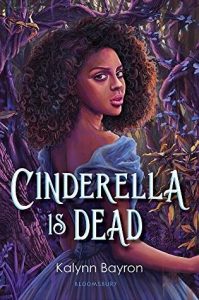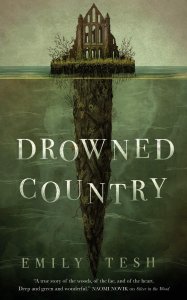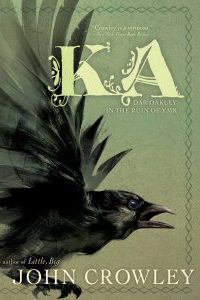Colleen Mondor Reviews Cinderella Is Dead by Kalynn Bayron
 Cinderella Is Dead, Kalynn Bayron (Bloomsbury 978-1-5476-0387-9, $18.99, 385pp, hc) July 2020.
Cinderella Is Dead, Kalynn Bayron (Bloomsbury 978-1-5476-0387-9, $18.99, 385pp, hc) July 2020.
This. Is It.
Finally.
The Cinderella story we have all been pining for has arrived. This is the story of what happened not just the day after “happily ever after.” but decades and centuries after. This is the story of what happened all those years later in the kingdom whose foundational truth was the story of a girl with an evil stepmother and stepsisters who, through the magical assistance of her fairy godmother, captured the attention of Prince Charming and married him. We were told she became the most famous princess in the land and everyone, of course, wanted to be just like her. Except, really, it was all a lie and a nightmare and a tragedy. Wrap it up in pretty dresses and a pumpkin-carriage all you want, but this myth is long overdue for an accuracy test. Readers should not be surprised that all the sparkle was to hide something much darker, or that it will take some determined young women to finally set this kingdom free.
With Cinderella Is Dead, author Kalynn Bayron tells the story of what happens when a fairy tale is worshipped to the point of subjugation and all the kingdom’s girls have to attend annual balls as soon as they come of age, whether they choose to or not. Seventeen-year old Sophia loves her best friend Erin and the two girls have been dreading the upcoming event in which young girls are paraded like choice cuts of meat before the eligible men of the kingdom. While Erin is determined to do her best to find an appealing spouse and spare her family the king’s wrath, Sophia wants to find a way for the two of them to be together – but getting out of Lille is impossible and hiding in the surrounding forest is too frightening to imagine. Women have no rights and live under strict curfew and continued male control. She must attend the ball, she must attract a man, she must marry, and then she must live as he wishes for the rest of her “happily ever after life.” If no man wants her then she will be left to a life of service or, as happens to no small number of Lille’s inhabitants, she will simply disappear.
She might even end up dead in the woods, as also occasionally happens to overlooked girls.
There is no complaining about any of this because Cinderella’s tale, as programmed into everyone’s lives from birth, makes clear that the fairy tale requires the girl to catch the boy’s eye, the girl to be chosen, the girl to be always – always – grateful. And if some of those marriages turn out badly, if the woman sewing Sophia’s ball gown is beaten by her abusive husband, well, that’s just a woman who needs to try harder. Cinderella lived happily ever after, didn’t she? If you can’t find the same ending, then you must be doing something wrong. (And don’t even get me started about the impossibility of a girl who loves another girl or a boy who loves another boy.)
In short order, Sophia attends the ball, witnesses a horrifying act of humiliation meted out by the king, sees two good friends dragged away, runs for her life, uncovers clues to the mystery of the dead girls, hides out in Cinderella’s mausoleum, meets the last living descendent of Cinderella’s stepsister Gabrielle(!), runs for her life again, loses a horse to some wolves (spoiler alert on that gruesome death), discovers the maybe-truth about the fairy godmother, and accepts that she is going to have to be hella brave, as brave as Cinderella tried to be, if she is going to force the changes that have been long overdue for her people.
She also gets the girl, but, as this is a fairy tale, that should not be a surprise.
There are many things about Cinderella Is Dead that are fantastic, from the fiercely heroic teen girls to the thoroughly despicable villains, but what I loved the most about this novel is the meticulous manner in which Bayron tackles the classic story and exposes each and every one of its flaws. The worldbuilding is perfect, the attention to detail outstanding, and the characters, both major and minor, deeply developed. The whole package is presented in this novel and it delivers like the sweet sword of fairytale justice we did not know we needed. Finally, Cinderella has her true champion, and we can put that damn glass slipper to rest forever.
Colleen Mondor, Contributing Editor, is a writer, historian, and reviewer who co-owns an aircraft leasing company with her husband. She is the author of “The Map of My Dead Pilots: The Dangerous Game of Flying in Alaska” and reviews regularly for the ALA’s Booklist. Currently at work on a book about the 1932 Mt. McKinley Cosmic Ray Expedition, she and her family reside in the Pacific Northwest and Alaska. More info can be found on her website: www.colleenmondor.com.
This review and more like it in the August 2020 issue of Locus.
©Locus Magazine. Copyrighted material may not be republished without permission of LSFF.
 While you are here, please take a moment to support Locus with a one-time or recurring donation. We rely on reader donations to keep the magazine and site going, and would like to keep the site paywall free, but WE NEED YOUR FINANCIAL SUPPORT to continue quality coverage of the science fiction and fantasy field.
While you are here, please take a moment to support Locus with a one-time or recurring donation. We rely on reader donations to keep the magazine and site going, and would like to keep the site paywall free, but WE NEED YOUR FINANCIAL SUPPORT to continue quality coverage of the science fiction and fantasy field.






